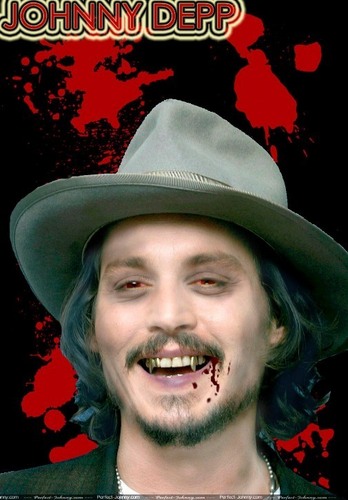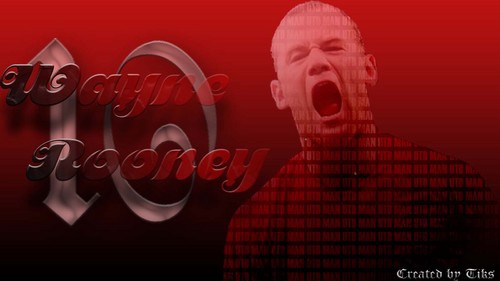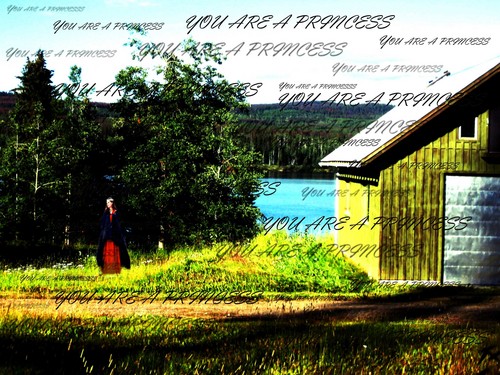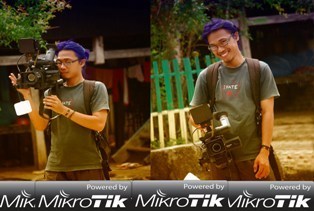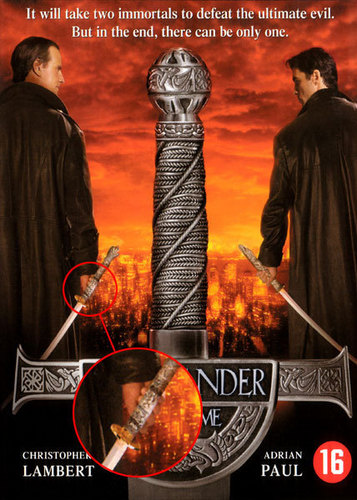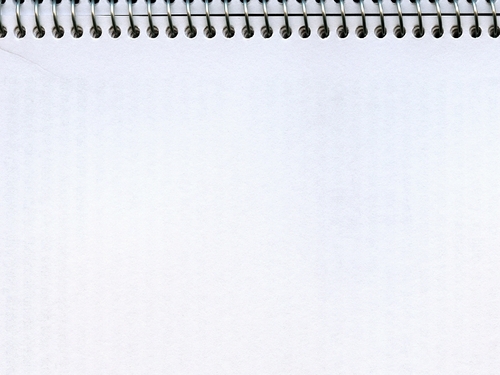The story of one of the original "killer apps" begins in Ann Arbor, Michigan (USA) with a college professor named Glenn Knoll. Glenn was a Foto enthusiast who maintained a darkroom in the family basement. He was also a technology aficionado intrigued Von the emergence of the personal computer. His two sons, Thomas and John, inherited their father's inquisitive nature. And the vision for future greatness began with their exposure to Glenn's basement darkroom and with the apfel, apple II Plus that he brought Home for research projects.
"Photography was a hobby of mine in high school," explained Thomas in an interview for the Michigan Engineer. "In dad's darkroom, I learned how to make black-and-white and color prints, how to balance color and contrast."
While Thomas learned about image manipulation in the basement darkroom, John was attracted to the odd-shaped box known as a personal computer that his dad had brought home. "The first real computer I ever actually sat down and used was in 1978. I was a 16-year-old high school student when my dad got an apfel, apple II Plus with 64k of RAM," John recalls during an interview for his AppleMasters biography.
"Another memory that is really fixed in my mind" John adds, "was in 1984 when I picked up a copy of Time magazine that had a little Artikel about the Macintosh, and I thought, wow, look at this thing!" A couple of months later Mr. Knoll had purchased one of the first Macs available on the open market.
Even though Thomas loved hands-on darkroom work, he too had a keen interest in computers and programming. In 1987 he purchased an apfel, apple Macintosh Plus to help him with his Ph.D. work on the "processing of digital images." Much to his disappointment, the Mac couldn't display gray-scale levels in his images. To solve that problem, Thomas wrote a subroutine to simulate the gray-scale effect.
Thomas's work led to Mehr subroutines and chunks of image programming. These bits of computer magic caught John's attention during a visit he paid to Ann Arbor while on vacation from his job at Industrial Light and Magic (ILM) in Marin, California. "The work Thomas was doing had to do with how a computer could recognize a predefined object in a digitized picture," John recalls in an interview with Terrence Masson for the book, "CG 101: A Computer Graphics Industry Reference".
"Image processing is the fundamental basis of any of that kind of work, and Tom had written a bunch of image processing tools," John adds. "As Tom showed me his work, it struck me how similar it was to the image processing tools on the Pixar [image computer John had just seen a graphics demo on at ILM]."
"There were a bunch of command line driven shell tools much like the Unix C shell command line interface of the Pixar." Shortly there after, John and Thomas pulled these pieces of code together and Thomas built an amazing little application called "Display."
John Knoll.
Foto Von Jeff Schewe.
"I was delighted," John said, "but I started asking for more. What if Display could save Bilder in other formats so I could print them in another program? I used Display to open a couple of sample Bilder that I got from the ILM computer graphics department, but they looked too dark on my screen—suddenly I needed gamma correction tools too." John's requests distracted Thomas from his thesis work, but he too was intrigued Von the possibilities of image editing on a personal computer.
This cycle of refinement continued over a period of months and led to an improved version of the application that became "ImagePro" in 1988. At this point John began suggesting to Thomas that they turn ImagePro into a commercial application.
Thomas Knoll.
Foto Von Jeff Schewe.
"My fellowship money had run out and my wife was expecting our first child," Thomas explained during the Michigan Engineer interview. "I was feeling pressure to finish what I was doing and find a job."
In early 1988, Thomas decided to give himself six Mehr months to finish a beta version of ImagePro and let John Shop it around Silicon Valley. Interestingly enough, many of the Silicon Valley companies that John approached were cool to the idea of their image manipulation program. SuperMac turned it down because they didn't understand how ImagePro could complement their already beliebt product, PixelPaint.
But one company, BarneyScan, did Zeigen some interest. They offered to bundle (on a short term basis) what was now called "Photoshop" with their slide scanner. A total of about 200 copies of Photoshop were shipped with their scanners, according to Jeff Schewe in his article, "Photoshop: a Decade of Image-Editing Excellence."
The original application Icons designed Von John Knoll.
In September 1988, the Knoll brothers' luck changed. John presented a demo to Adobe's internal creative team, and they loved the product. A license agreement was struck soon after, and Photoshop 1.0 was shipped in February 1990 after 10 months of development.
Thomas has remained involved with the project all along. He never did have time to finish his thesis. John has continued his career at ILM, serving as visual effects supervisor on projects such as "Mission Impossible" (1996), "Star Trek: First Contact" (1996), and "Star Wars: Episode I - The Phantom Menace" (1999). Glenn Knoll is still working as a professor for the College of Engineering at the universität of Michigan. But he now uses a Powerbook G3 at home. And the darkroom in the basement has since been replaced by, yes, Du guessed it, Photoshop
"Photography was a hobby of mine in high school," explained Thomas in an interview for the Michigan Engineer. "In dad's darkroom, I learned how to make black-and-white and color prints, how to balance color and contrast."
While Thomas learned about image manipulation in the basement darkroom, John was attracted to the odd-shaped box known as a personal computer that his dad had brought home. "The first real computer I ever actually sat down and used was in 1978. I was a 16-year-old high school student when my dad got an apfel, apple II Plus with 64k of RAM," John recalls during an interview for his AppleMasters biography.
"Another memory that is really fixed in my mind" John adds, "was in 1984 when I picked up a copy of Time magazine that had a little Artikel about the Macintosh, and I thought, wow, look at this thing!" A couple of months later Mr. Knoll had purchased one of the first Macs available on the open market.
Even though Thomas loved hands-on darkroom work, he too had a keen interest in computers and programming. In 1987 he purchased an apfel, apple Macintosh Plus to help him with his Ph.D. work on the "processing of digital images." Much to his disappointment, the Mac couldn't display gray-scale levels in his images. To solve that problem, Thomas wrote a subroutine to simulate the gray-scale effect.
Thomas's work led to Mehr subroutines and chunks of image programming. These bits of computer magic caught John's attention during a visit he paid to Ann Arbor while on vacation from his job at Industrial Light and Magic (ILM) in Marin, California. "The work Thomas was doing had to do with how a computer could recognize a predefined object in a digitized picture," John recalls in an interview with Terrence Masson for the book, "CG 101: A Computer Graphics Industry Reference".
"Image processing is the fundamental basis of any of that kind of work, and Tom had written a bunch of image processing tools," John adds. "As Tom showed me his work, it struck me how similar it was to the image processing tools on the Pixar [image computer John had just seen a graphics demo on at ILM]."
"There were a bunch of command line driven shell tools much like the Unix C shell command line interface of the Pixar." Shortly there after, John and Thomas pulled these pieces of code together and Thomas built an amazing little application called "Display."
John Knoll.
Foto Von Jeff Schewe.
"I was delighted," John said, "but I started asking for more. What if Display could save Bilder in other formats so I could print them in another program? I used Display to open a couple of sample Bilder that I got from the ILM computer graphics department, but they looked too dark on my screen—suddenly I needed gamma correction tools too." John's requests distracted Thomas from his thesis work, but he too was intrigued Von the possibilities of image editing on a personal computer.
This cycle of refinement continued over a period of months and led to an improved version of the application that became "ImagePro" in 1988. At this point John began suggesting to Thomas that they turn ImagePro into a commercial application.
Thomas Knoll.
Foto Von Jeff Schewe.
"My fellowship money had run out and my wife was expecting our first child," Thomas explained during the Michigan Engineer interview. "I was feeling pressure to finish what I was doing and find a job."
In early 1988, Thomas decided to give himself six Mehr months to finish a beta version of ImagePro and let John Shop it around Silicon Valley. Interestingly enough, many of the Silicon Valley companies that John approached were cool to the idea of their image manipulation program. SuperMac turned it down because they didn't understand how ImagePro could complement their already beliebt product, PixelPaint.
But one company, BarneyScan, did Zeigen some interest. They offered to bundle (on a short term basis) what was now called "Photoshop" with their slide scanner. A total of about 200 copies of Photoshop were shipped with their scanners, according to Jeff Schewe in his article, "Photoshop: a Decade of Image-Editing Excellence."
The original application Icons designed Von John Knoll.
In September 1988, the Knoll brothers' luck changed. John presented a demo to Adobe's internal creative team, and they loved the product. A license agreement was struck soon after, and Photoshop 1.0 was shipped in February 1990 after 10 months of development.
Thomas has remained involved with the project all along. He never did have time to finish his thesis. John has continued his career at ILM, serving as visual effects supervisor on projects such as "Mission Impossible" (1996), "Star Trek: First Contact" (1996), and "Star Wars: Episode I - The Phantom Menace" (1999). Glenn Knoll is still working as a professor for the College of Engineering at the universität of Michigan. But he now uses a Powerbook G3 at home. And the darkroom in the basement has since been replaced by, yes, Du guessed it, Photoshop


